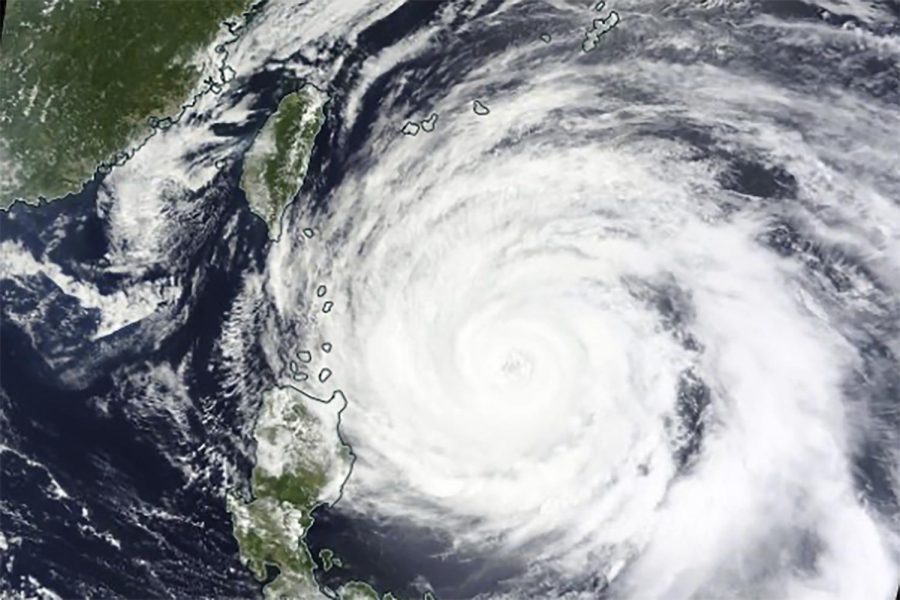Approaching Typhoon Mawar forces evacuation of Philippines
Thousands of Filipinos seek shelter in Cagayan, Batanes and other provinces as the storm draws nearer
May 29, 2023
MANILA, Philippines — Philippine officials began evacuating thousands of villagers and shut down schools and offices Monday as Typhoon Mawar approached the country’s northern provinces a week after battering the U.S. territory of Guam.
The typhoon is packing maximum sustained winds of 96 mph and gusts up to 118 mph but is not expected to hit the Philippines’s northern mountainous region directly. Current projections show the typhoon veering northeast by midweek toward Taiwan or southern Japan.
Authorities warned of dangerous tidal surges, flash floods and landslides as the typhoon blows past Cagayan and the northernmost province of Batanes from Tuesday to Wednesday. Gusty winds lashed eastern villages of Cagayan on Monday, causing an old and unoccupied warehouse in a wharf to collapse and prompting more villagers to move to evacuation centers.
Nearly 5,000 people have sheltered in Cagayan, Batanes and other provinces, said Assistant Secretary Raffy Alejandro of the Office of Civil Defense, adding the number was expected to rise given the precautionary evacuations that were underway in flood- and landslide-prone regions.
Classes and office work, except those involved in disaster preparedness, have been suspended. Flights to and from the provinces have been canceled, and fishing and passenger vessels have been prohibited from sailing. In at least one province, officials imposed a liquor ban.
“Even if the sun is up, the weather is so unpredictable nowadays and could change anytime, so we should always stay on the side of safety,” Alejandro said. “We’re talking here of potential threats to lives.”
Mawar swept through Guam last week as the strongest typhoon to hit the U.S. Pacific territory in over two decades, flipping cars, tearing off roofs and knocking down power lines.
“These typhoons, earthquakes and natural calamities have been a part of our lives,” Batanes Vice Gov. Ignacio Villa said. “We cannot afford not to prepare because that would potentially mean the loss of lives and major damage.”
Army troops, police, firefighters and volunteer groups were standing by for search and rescue operations, officials said, and more than a million food packs have been prepared for any contingency.
Villa said the local government lent ropes to villagers in high-risk communities to strengthen their houses as the typhoon approached. Batanes, a chain of islands with about 19,000 people, has been experiencing nightly power outages in recent days because a tanker ship carrying fuel for its power generators had taken shelter from the approaching typhoon.
While the typhoon threatened mostly the country’s northern provinces, government forecasters said it could enhance monsoon rains in other regions farther south, including the capital, Manila, and the central Philippines.
About 20 typhoons and storms each year batter the Philippine archipelago, which also sits on seismic faults where volcanic eruptions and earthquakes occur, making the Southeast Asian nation one of the world’s most disaster-prone areas.
In November 2013, Typhoon Haiyan left more than 7,300 people dead or missing, flattened entire villages, swept ships inland, demolished about a million shanties and houses and displaced more than 5 million in one of the country’s poorest regions in the central Philippines.

